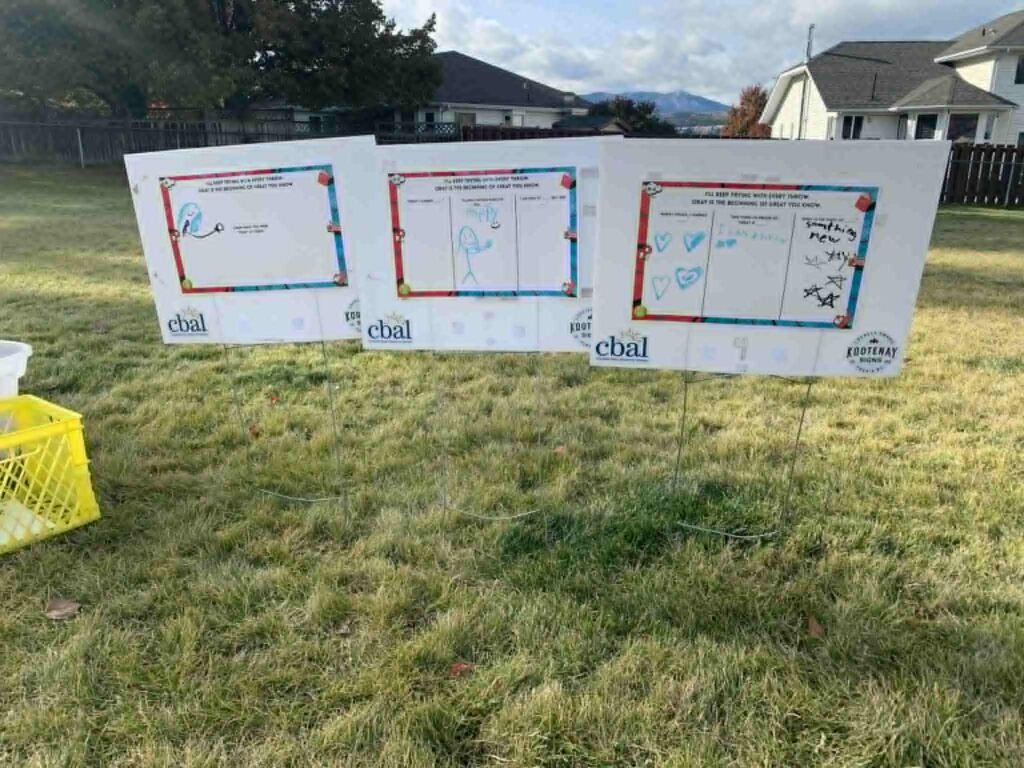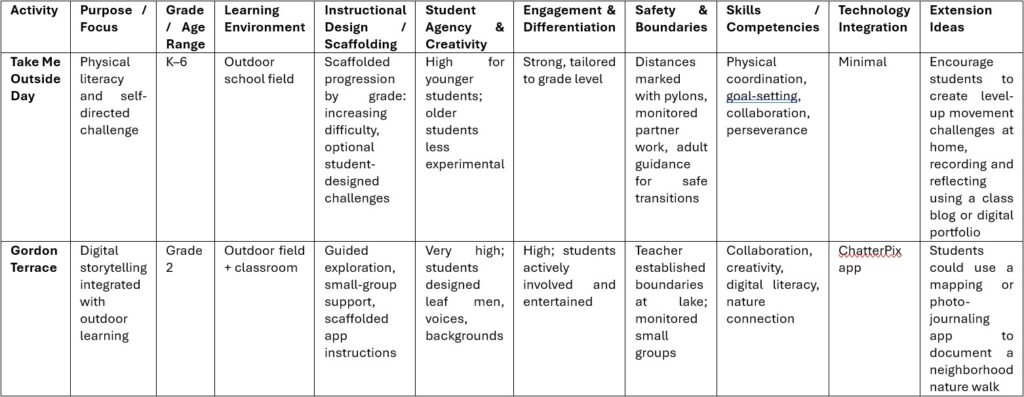Take Me Outside Day
During Take Me Outside Day, my partner and I led physical challenges using scoops, wiffle balls, and pylons for students from kindergarten through grade six. Students progressed through levels of difficulty, starting with individual throws, moving to partner passes, and finally creating their own level-up variations.
To ensure age-appropriate challenges and safety, we scaffolded activities carefully:
- Kindergarten: Focused on individual throws and simple partner passes, emphasizing exploration and fun.
- Grades 1–3: Introduced pylons to mark distance, challenged students to throw farther, and encouraged self-created variations.
- Grades 4–6: Added two balls to increase difficulty and offered optional self-designed challenges while monitoring safety.
What stood out to me most was how creativity expressed itself differently across age groups. Younger students were uninhibited, testing boundaries, laughing through trial and error, and turning equipment into imaginative play. In contrast, older students approached the challenge with more structure, often refining techniques they already knew rather than inventing new ones. It reminded me how essential open-ended exploration is for fostering curiosity and self-expression at every age.

Elizabeth Lake Walk
During the Elizabeth Lake Walk, my partner and I joined a grade two class on a nature scavenger hunt followed by a digital storytelling project using the ChatterPix app. Students gathered leaves and twigs to build leaf men, photographed their creations, and brought them to life with voices, movement, and digital backgrounds.
What I loved about this activity was the natural excitement it generate, students were laughing, problem-solving, and helping one another capture the perfect shot. The combination of outdoor learning and digital tools created an energy that felt both grounded and innovative. It heightened my perspective on how technology can be used, rather than confining learning to screens, apps like ChatterPix can extend it, blending movement, imagination, and creativity in outdoor spaces. It’s a reminder that technology doesn’t have to replace play; it can amplify it.

Comparison and Contrast
While both activities emphasized experiential learning, their purposes and outcomes unfolded in different ways. Take Me Outside Day centered on physical literacy, goal-setting, and challenge-based progression, whereas the Elizabeth Lake Walk integrated technology with nature to inspire creative storytelling.
The contrast between the two experiences revealed how student engagement can emerge through distinct forms, some thrive on physical mastery and competition, while others flourish through artistic expression and imaginative play. Yet both experiences required intentional scaffolding, flexibility, and a willingness to let students lead their own learning. Ultimately, both reminded me that true engagement grows when students feel trusted to explore and express themselves in ways that resonate personally.
Pathways to Understanding: Compare & Contrast Matrix
Take Me Outside Day vs. Elizabeth Lake Walk

Reflective Synthesis
Both activities blended experiential learning with creativity and collaboration but through distinct pathways. Take Me Outside Day fostered perseverance and physical confidence through movement, while the Elizabeth Lake Walk encouraged imaginative thinking and digital expression through nature-based storytelling.
Together, these experiences deepened my understanding that engagement looks different for every learner. Whether it’s through movement, imagination, or a mix of both, the goal remains the same, helping students connect meaningfully to their learning by giving them space to explore, create, and grow.